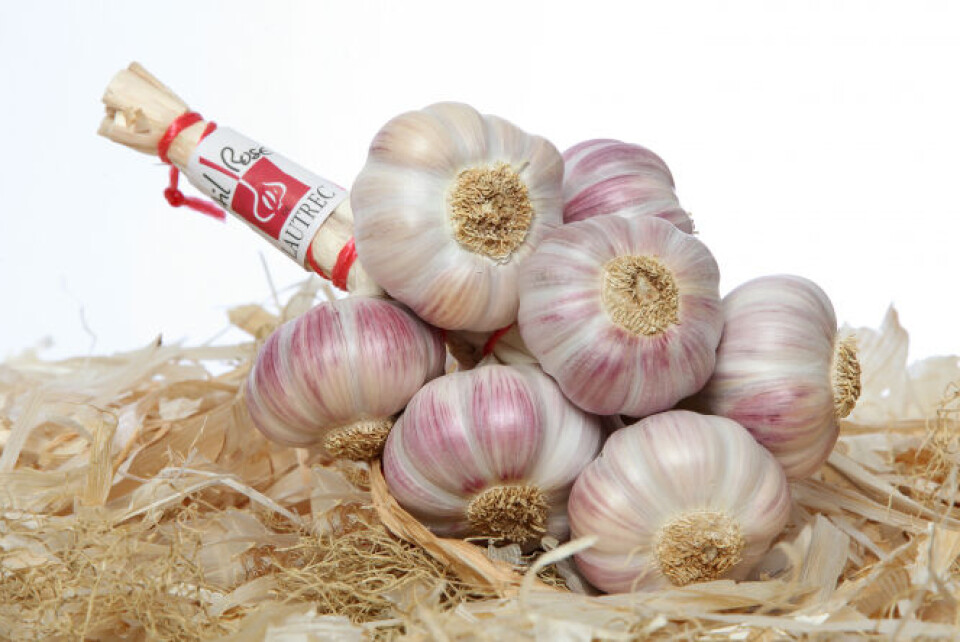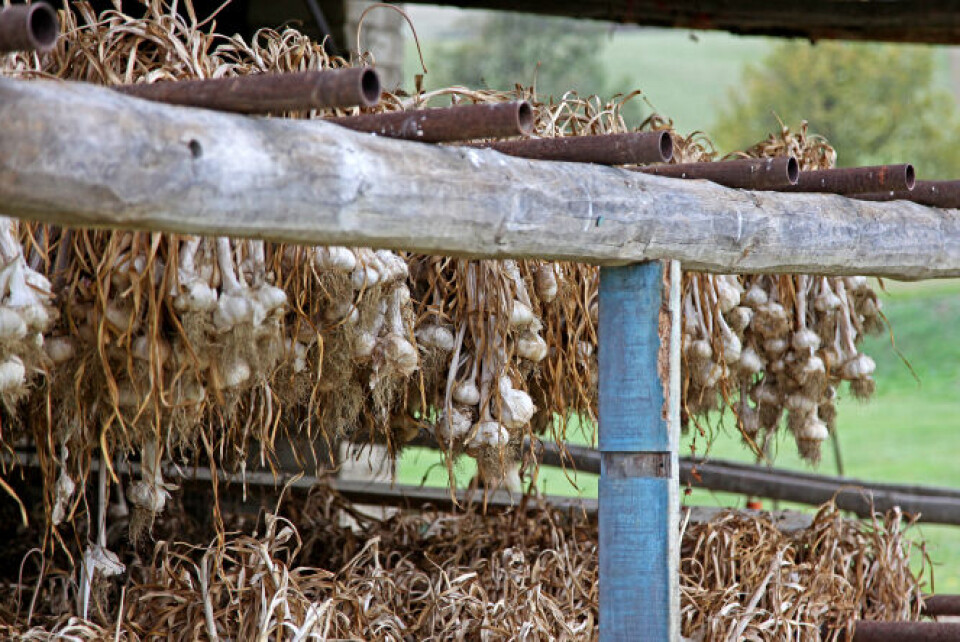-
The origins and meaning of tirer les marrons du feu
As Christmas approaches, we look at a phrase to describe someone who takes advantage of a situation
-
Step back in time for some ‘dinosaur’ planting in your French garden
Captivated in the garden this month by one species of plant that dates back 200 million years, and another which is one of the oldest flowering plant families on the planet
-
Classic French recipe with an exotic twist: caramelised onion soup
A dish inspired by the travels of two Paris chefs
Ail Rose de Lautrec: France's crème de la crème of garlic
Ail Rose from Tarn is the country's most highly prized garlic by top chefs in France and the only one to have both a PGI (Protected Geographical Indication) and Label Rouge label

One of the most highly prized varieties of garlic is the Ail Rose de Lautrec which is the only one to have both a PGI (Protected Geographical Indication) and Label Rouge label. The first protects its provenance and both control the way it is grown and conditioned, ensuring high standards of quality.
Each year’s crop is ready to be sold from the end of July or beginning of August depending on that season’s weather conditions.
148 producers grow this variety of garlic, in an area covering 87 communes in the Tarn with Lautrec, one of the Most Beautiful Villages in France, at its centre.

Gaël Bardou, President of the Syndicat de Défense du Label Rouge et de l’IGP Ail Rose de Lautrec, which represents producers, says it is appreciated above all for its natural sugar content and its subtle flavour:
“Though it unquestionably tastes of garlic it is slightly less powerful than white and purple varieties and lends itself to very many dishes, including starters, main courses and even deserts. A local chef has recently produced a sweet pink garlic cheesecake and it is surprisingly and amazingly delicious.”
There is a legend to explain why pink garlic is cultivated around Lautrec. In the Middle Ages a travelling salesman paid for his meal at a local inn with cloves of garlic.
The innkeeper liked them so much he planted some in his garden. In 1959 the local producers got together to create a syndicate and they obtained the Label Rouge in 1966 and the PGI in 1996. Their skills are passed on from generation to generation.
Mr Bardou has eight hectares of “pink” garlic. He says it requires different and more labour intensive procedures to grow than other varieties:
“We sow it later, from December 1 to January 31, rather than October. Unlike other garlics it starts developing a flower towards the end of May, which we have to cut off or it will take all the nutrition from the bulb and leave us with a very poor specimen. This can only be done by hand and requires a great deal of man power.”
By the end of June or the beginning of July it is ready to harvest:
“There are two methods, both using different machines. The first pulls the whole plant out of the soil, ties around ten together with string and drops them back on the field to rest for 24 hours. These are then picked up the following day by around six workers who take them back to a hanger where they are suspended on bars and left to dry out for three weeks.
The more modern method is a machine which cuts off the leaves and stalk. The earth is then cleaned off the bulbs, which is also labour intensive and they are then stacked in big containers with motorised ventilators to dry them. It also takes around three weeks. Farmers are divided around 50/50 between the two methods which have the same end result.”

After drying they have to be prepared for sale: “First the roots have to be cut off and the outer skins peeled off. Only the cloves are tinged pink, so you do not see the colour until there are only one or two layers left of the white skin. This can only be done by hand and is a long process, which needs care to avoid damaging the bulb.
The traditional way of presenting them is by tying the stems together to make a garlic string. Unlike white and purple varieties the stems cannot be plaited because one of the characteristics of pink garlic, is a stiff stem. The technique is called “manouille” which in the local dialect means “by hand” as it is a manual task requiring great dexterity.
“With practise skilled workers can complete 25 in an hour. We put on demonstrations for tourists, and they are always surprised by how much work it takes to produce and present garlic.”
For wholesalers the garlic is presented in trays without their stem, and for supermarkets they are placed by hand in netting, in which case more layers of skin are left on for protection and the garlic does not appear pink until peeled.
The terroir is very important to the final taste of the garlic and it is only grown in the local chalky/clay soil. There has to be crop rotation, with three years between each garlic crop. Five varieties are authorised: Ibérose, Edenrose, Goulurose, Jardirose and Rose de Lautrec. It is resistant to disease and though the crop is not organic, it is very rare that any chemicals are used.
Each garlic bulb sold is registered and can be traced back to the farm where it was grown with a history of its development and treatments from seed to sale
To be sold as a PGI and Label Rouge each head of garlic has to be perfect and meet all the vigorous regulations:
“There is one employee in our syndicate who constantly checks farmers are abiding by the rules and there are also outside controls. Only about half of our production can be sold with the labels, which amounts to between 600 and 800 tonnes a year, depending on the conditions. 25% is exported and there is growing interest from abroad. The garlic which does not make the grade is sold more cheaply.”
Mr Bardou is proud of his garlic and says so are all the farmers who grow it. The highlight of the year is the Fête de l’Ail Rose de Lautrec when – in non-Covid years – 15,000 visitors flock to the village over three days in the first weekend in August to taste the new crop.

There is an evening banquet for 1,500, and 2,000 litres of garlic soup is on offer at midday. Teams compete to produce the longest manouille. The record stands at 24 metres. In the evening it is sold with all proceeds to a chosen charity.
The 2020 Fête was cancelled, but Mr Bardou hopes they will be able to have some sort of festival this year (August 6-7, see www.ailrosedelautrec.com), even though it cannot be on the usual scale.
Related stories
French spreadable cheese La Vache Qui Rit celebrates 100th year
American blue crabs invading French coast are sent to Élysée Palace
























